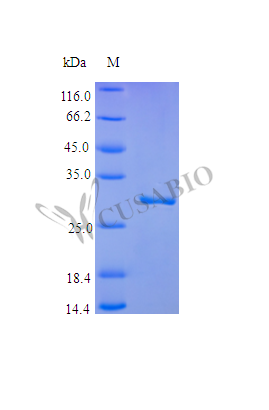Cookie-Einstellungen
Diese Website benutzt Cookies, die für den technischen Betrieb der Website erforderlich sind und stets gesetzt werden. Andere Cookies, die den Komfort bei Benutzung dieser Website erhöhen, der Direktwerbung dienen oder die Interaktion mit anderen Websites und sozialen Netzwerken vereinfachen sollen, werden nur mit Ihrer Zustimmung gesetzt.
Konfiguration
Technisch erforderlich
Diese Cookies sind für die Grundfunktionen des Shops notwendig.
"Alle Cookies ablehnen" Cookie
"Alle Cookies annehmen" Cookie
Ausgewählter Shop
CSRF-Token
Cookie-Einstellungen
FACT-Finder Tracking
Individuelle Preise
Kundenspezifisches Caching
Session
Währungswechsel
Komfortfunktionen
Diese Cookies werden genutzt um das Einkaufserlebnis noch ansprechender zu gestalten, beispielsweise für die Wiedererkennung des Besuchers.
Facebook-Seite in der rechten Blog - Sidebar anzeigen
Merkzettel
Statistik & Tracking
Endgeräteerkennung
Kauf- und Surfverhalten mit Google Tag Manager
Partnerprogramm

Bei Fragen nutzen Sie gerne unser Kontaktformular.
Bestellen Sie auch per E-Mail: info@biomol.com
Größere Menge gewünscht? Bulk-Anfrage
Bestellen Sie auch per E-Mail: info@biomol.com
Größere Menge gewünscht? Bulk-Anfrage
Organism: Homo sapiens (Human). Source: E.Coli. Expression Region: 98-356aa. Protein Length:... mehr
Produktinformationen "Plasminogen protein (PLG), partial (Active), human, recombinant"
Organism: Homo sapiens (Human). Source: E.Coli. Expression Region: 98-356aa. Protein Length: Partial. Tag Info: Tag-Free. Target Protein Sequence: VYLSECKTGN GKNYRGTMSK TKNGITCQKW SSTSPHRPRF SPATHPSEGL EENYCRNPDN DPQGPWCYTT DPEKRYDYCD ILECEEECMH CSGENYDGKI SKTMSGLECQ AWDSQSPHAH GYIPSKFPNK NLKKNYCRNP DRELRPWCFT TDPNKRWELC DIPRCTTPPP SSGPTYQCLK GTGENYRGNV AVTVSGHTCQ HWSAQTPHTH NRTPENFPCK NLDENYCRNP DGKRAPWCHT TNSQVRWEYC KIPSCDSSP. Purity: >95% as determined by SDS-PAGE. Endotoxin: Less than 1.0 EU/µg as determined by LAL method. Biological Activity: Fully biologically active when compared to standard. The specific activity determined by an assay on anti-proliferation and anti-migration using endothelial cells in vitro and anti-angiogenesis in vivo is 5.5 x 10^5 IU/mg. Form: Lyophilized powder. Buffer: Lyophilized from a 0.2 µm filtered 20 mM NaAc, pH 5.5, 4 % mannitol. Reconstitution: We recommend that this vial be briefly centrifuged prior to opening to bring the contents to the bottom. Please reconstitute protein in deionized sterile water to a concentration of 0.1-1.0 mg/mL.We recommend to add 5-50% of glycerol (final concentration) and aliquot for long-term storage at -20 °C/-80 °C. Our default final concentration of glycerol is 50%. Customers could use it as reference. Storage: The shelf life is related to many factors, storage state, buffer ingredients, storage temperature and the stability of the protein itself. Generally, the shelf life of liquid form is 6 months at -20 °C/-80 °C. The shelf life of lyophilized form is 12 months at -20 °C/-80 °C. Notes: Repeated freezing and thawing is not recommended. Store working aliquots at 4 °C for up to one week. Relevance: Plasmin dissolves the fibrin of blood clots and acts as a proteolytic factor in a variety of other processes including embryonic development, tissue remodeling, tumor invasion, and inflammation. In ovulation, weakens the walls of the Graafian follicle. It activates the urokinase-type plasminogen activator, collagenases and several complement zymogens, such as C1 and C5. Cleavage of fibronectin and laminin leads to cell detachment and apoptosis. Also cleaves fibrin, thrombospondin and von Willebrand factor. Its role in tissue remodeling and tumor invasion may be modulated by CSPG4. Binds to cells. {ECO:0000269, PubMed:14699093}., Angiostatin is an angiogenesis inhibitor that blocks neovascularization and growth of experimental primary and metastatic tumors in vivo. {ECO:0000269, PubMed:14699093}. Reference: n/a. Function: Plasmin dissolves the fibrin of blood clots and acts as a proteolytic factor in a variety of other processes including embryonic development, tissue remodeling, tumor invasion, and inflammation. In ovulation, weakens the walls of the Graafian follicle. It activates the urokinase-type plasminogen activator, collagenases and several complement zymogens, such as C1 and C5. Cleavage of fibronectin and laminin leads to cell detachment and apoptosis. Also cleaves fibrin, thrombospondin and von Willebrand factor. Its role in tissue remodeling and tumor invasion may be modulated by CSPG4. Binds to cells.
| Schlagworte: | PLG, EC=3.4.21.7, Recombinant Human Plasminogen protein (PLG), partial (Active) |
| Hersteller: | Cusabio |
| Hersteller-Nr: | AP002261HU |
Eigenschaften
| Anwendung: | Active protein |
| Konjugat: | No |
| Spezies-Reaktivität: | human |
| MW: | 29.7 kD |
| Reinheit: | >95% (SDS-PAGE) |
| Format: | Lyophilized |
Datenbank Information
| KEGG ID : | K01315 | Passende Produkte |
| UniProt ID : | P00747 | Passende Produkte |
| Gene ID : | GeneID 5340 | Passende Produkte |
Handhabung & Sicherheit
| Lagerung: | -20°C |
| Versand: | +4°C (International: +4°C) |
Achtung
Nur für Forschungszwecke und Laboruntersuchungen: Nicht für die Anwendung im oder am Menschen!
Nur für Forschungszwecke und Laboruntersuchungen: Nicht für die Anwendung im oder am Menschen!
Hier kriegen Sie ein Zertifikat
Loggen Sie sich ein oder registrieren Sie sich, um Analysenzertifikate anzufordern.
Bewertungen lesen, schreiben und diskutieren... mehr
Kundenbewertungen für "Plasminogen protein (PLG), partial (Active), human, recombinant"
Bewertung schreiben
Loggen Sie sich ein oder registrieren Sie sich, um eine Produktbewertung abzugeben.
Zuletzt angesehen

